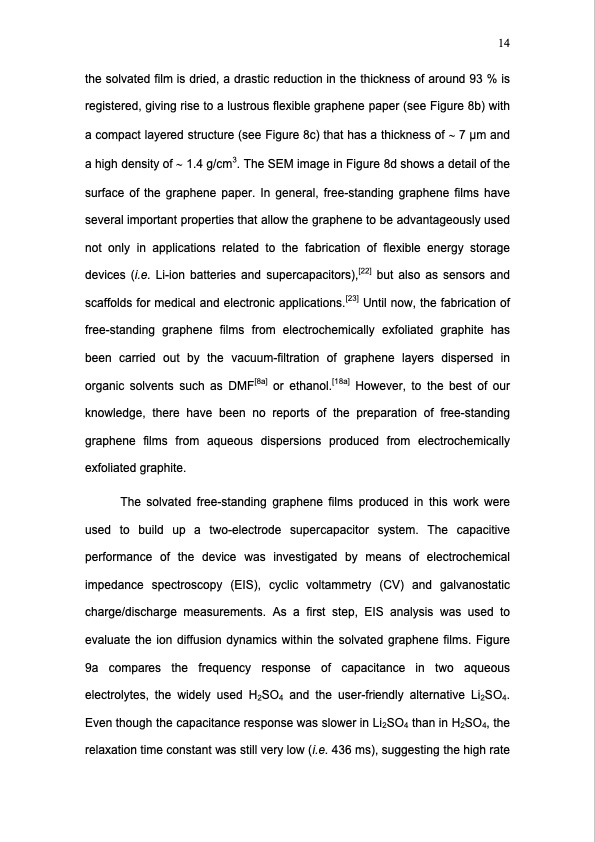PDF Publication Title:
Text from PDF Page: 014
the solvated film is dried, a drastic reduction in the thickness of around 93 % is registered, giving rise to a lustrous flexible graphene paper (see Figure 8b) with a compact layered structure (see Figure 8c) that has a thickness of ∼ 7 μm and a high density of ∼ 1.4 g/cm3. The SEM image in Figure 8d shows a detail of the surface of the graphene paper. In general, free-standing graphene films have several important properties that allow the graphene to be advantageously used not only in applications related to the fabrication of flexible energy storage devices (i.e. Li-ion batteries and supercapacitors),[22] but also as sensors and scaffolds for medical and electronic applications.[23] Until now, the fabrication of free-standing graphene films from electrochemically exfoliated graphite has been carried out by the vacuum-filtration of graphene layers dispersed in organic solvents such as DMF[8a] or ethanol.[18a] However, to the best of our knowledge, there have been no reports of the preparation of free-standing graphene films from aqueous dispersions produced from electrochemically exfoliated graphite. The solvated free-standing graphene films produced in this work were used to build up a two-electrode supercapacitor system. The capacitive performance of the device was investigated by means of electrochemical impedance spectroscopy (EIS), cyclic voltammetry (CV) and galvanostatic charge/discharge measurements. As a first step, EIS analysis was used to evaluate the ion diffusion dynamics within the solvated graphene films. Figure 9a compares the frequency response of capacitance in two aqueous electrolytes, the widely used H2SO4 and the user-friendly alternative Li2SO4. Even though the capacitance response was slower in Li2SO4 than in H2SO4, the relaxation time constant was still very low (i.e. 436 ms), suggesting the high rate 14PDF Image | Graphene from Electrochemically Exfoliated Graphite

PDF Search Title:
Graphene from Electrochemically Exfoliated GraphiteOriginal File Name Searched:
80863368.pdfDIY PDF Search: Google It | Yahoo | Bing
Salgenx Redox Flow Battery Technology: Power up your energy storage game with Salgenx Salt Water Battery. With its advanced technology, the flow battery provides reliable, scalable, and sustainable energy storage for utility-scale projects. Upgrade to a Salgenx flow battery today and take control of your energy future.
CONTACT TEL: 608-238-6001 Email: greg@infinityturbine.com (Standard Web Page)